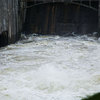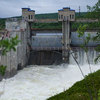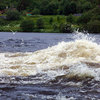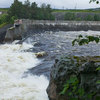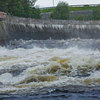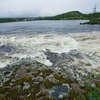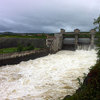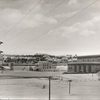Lower-Tuloma HEP
The first plant of the cascade – the Lower-Tuloma HEP (MURMASHINSKAYA) – was built in 1937 (launching the first turbine) as part of the electrification plan (GOELRO) in the settlement of Murmashi within a record period of 36 months. Mainly the dam builders included the people who had worked on the tough task of building the White Sea – Baltic Sea Canal (Belomor-Baltiisky Canal).
The plant was commissioned on 11 July 1938, when the second unit was launched, whereas the 3rd unit was launched in 1939 and the 4th one was launched only in 1941, just before the war.
The Lower-Tuloma HEP supplied electricity for the city of Murmansk and its suburbs and surrounding areas, the Kirov Railway and the Northern Fleet.
At the same time the Lower-Tuloma – Lapland – Olen – Tuloma – Polyarny PTL was designed and constructed. During the planning of and construction of the HEP the task of unification of the two pioneering transpolar power plants – Tuloma and Niva HEP into a unified unit was also resolved to create the “Kolenergo”.
The Lower-Tuloma Hep was fitted with a unique fish gate through the dam to assist the salmon which came here to spawn. The design of this fish gate remains unique till date. Many experts, even not local, rightfully recognize the Lower-Tuloma fish gate to be the best in the world.
This rock-filled dam of the HEP, standing at 29 m with a bitumen screen, was also the most unique, for long years, in the northern climatic conditions.
The Lower-Tuloma HEP was built very finely and remains dependable for many more years. When the state started reconstruction in 1980, it took no effort to increase the capacity by 12%.
The HEP’s capacity is 56MW; average production of electricity over the years – 300 million kWh.
